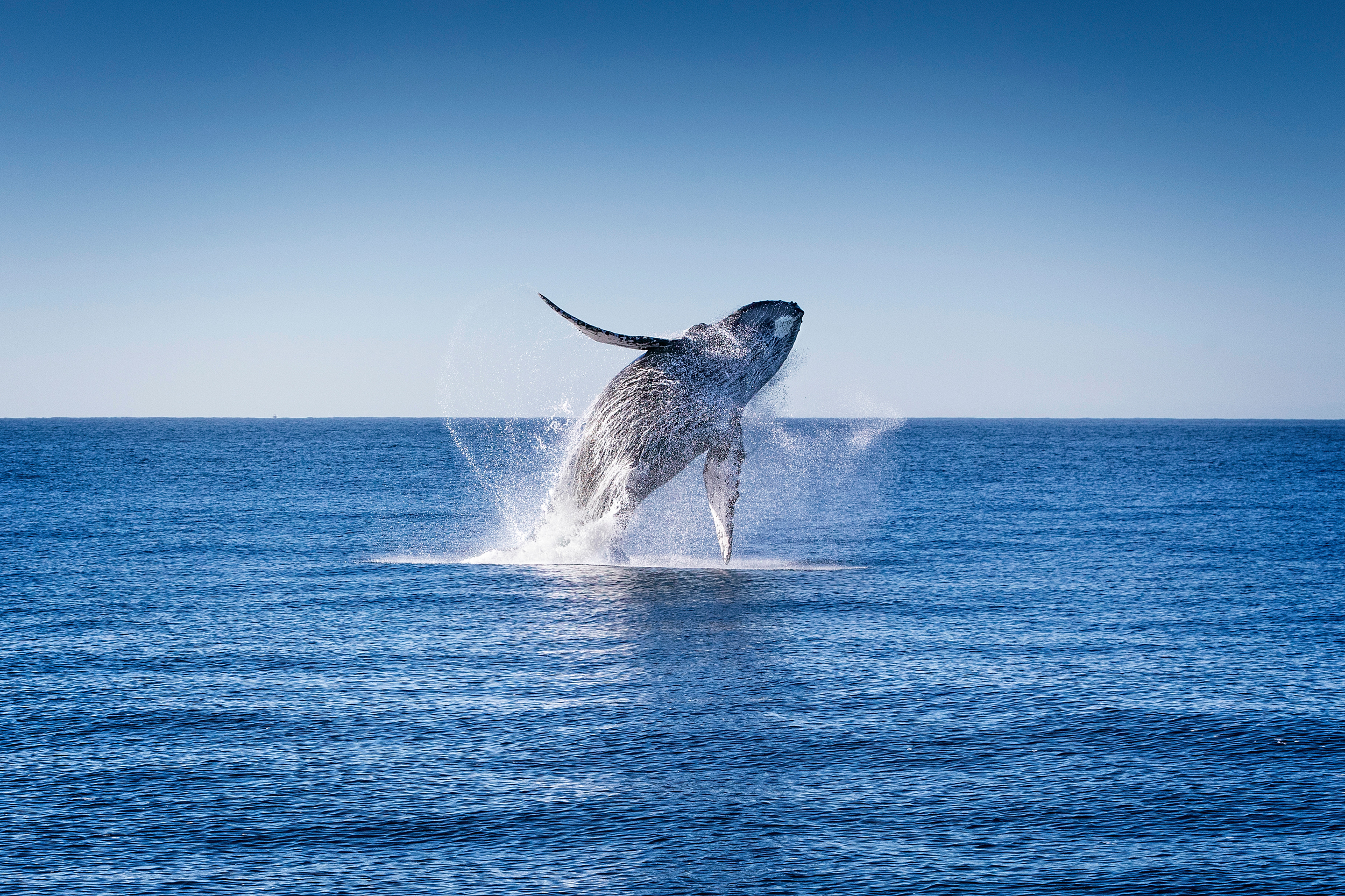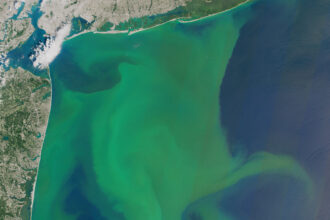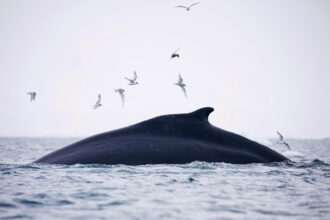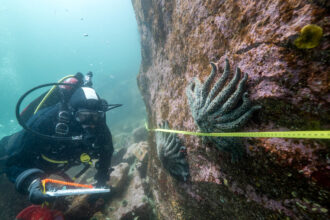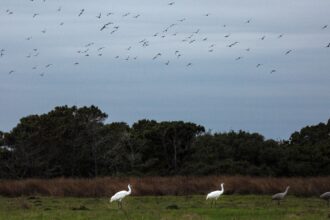For millennia, some of the world’s largest filter-feeding whales, including humpbacks, fin whales and blue whales, have undertaken some of the longest migrations on earth to travel between their warm breeding grounds in the tropics to nutrient-rich feeding destinations in the poles each year.
“Nature has finely tuned these journeys, guided by memory and environmental cues that tell whales when to move and where to go,” said Trisha Atwood, an ecologist and associate professor at Utah State University’s Quinney College of Agriculture and Natural Resources. But, she said, climate change is “scrambling these signals,” forcing the marine mammals to veer off course. And they’re not alone.
Earlier this year, Atwood joined more than 70 other scientists to discuss the global impacts of climate change on migratory species in a workshop convened by the United Nations Convention on the Conservation of Migratory Species of Wild Animals. The organization monitors and protects more than 1,000 species that cross borders in search of food, mates and favorable conditions to nurture their offspring.
More than 20 percent of these species are on the brink of extinction. It was the first time the convention had gathered for such a purpose, and their findings, published this month in a report, were alarming.
“Almost no migratory species is untouched by climate change,” Atwood said in an email to Inside Climate News.
From whales and dolphins, to arctic shorebirds and elephants, all are affected by rising temperatures, extreme weather and shifting ecosystems, which are disrupting migratory routes and reshaping critical habitats across the planet.
Asian elephants, for instance, are being driven to higher ground and closer to human settlements as they search for food and water amidst intensifying droughts, fueling more frequent human-elephant conflicts, the report found. Shorebirds are reaching their Arctic breeding grounds out of sync with the insect blooms their chicks depend on to survive.
The seagrass meadows that migrating sea turtles and dugongs feed on are disappearing due to warmer waters, cyclones and sea level rise, according to the report. To date, around 30 percent of the world’s known seagrass beds have been lost, threatening not only the animals that depend on them, but also humans. These vital ecosystems store around 20 percent of the world’s oceanic carbon, in addition to supporting fisheries and protecting coastlines.
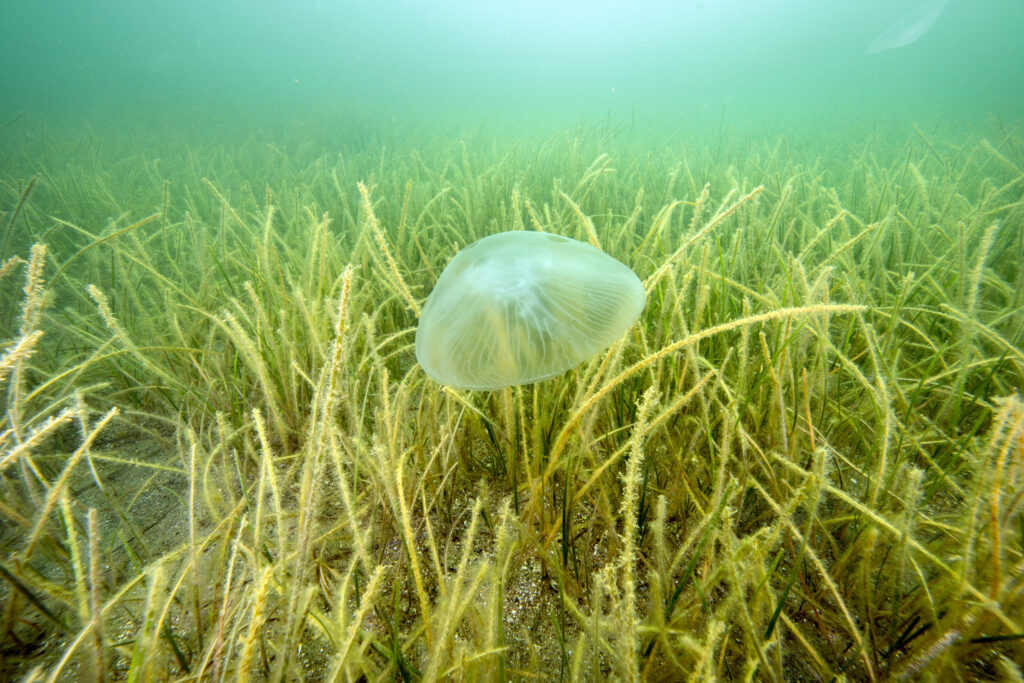
Together, these examples reveal how climate change is tipping the delicate balance migratory species have long relied on to survive.
“Climate change is disrupting this balance by altering when and where resources appear, how abundant they are, the environmental conditions species must endure, and the other organisms they interact with, reshaping entire networks of predators and competitors,” Atwood said.
Especially amongst marine life.
On the United States’ West Coast, for instance, Atwood said, warming waters are pushing juvenile great white sharks out of their traditional southern habitats. This shift has led to a sharp rise in sea otter deaths in Monterey Bay, California, where they are increasingly getting bitten by the sharks.
Whales and dolphins are particularly vulnerable species as rising temperatures threaten both their prey and their habitat, according to the report.
Heatwaves in the Mediterranean are projected to reduce suitable habitat for endangered fin whales by up to 70 percent by mid-century as their prey dwindles or moves due to rising temperatures. In some places, such as the Northern Adriatic Sea, hotter temperatures may eventually prove intolerable for bottlenose dolphins. “Rising water temperatures could exceed the species’ physiological tolerance,” the report says, which also acknowledges that this is already happening in other parts of the world, such as the Amazon River.
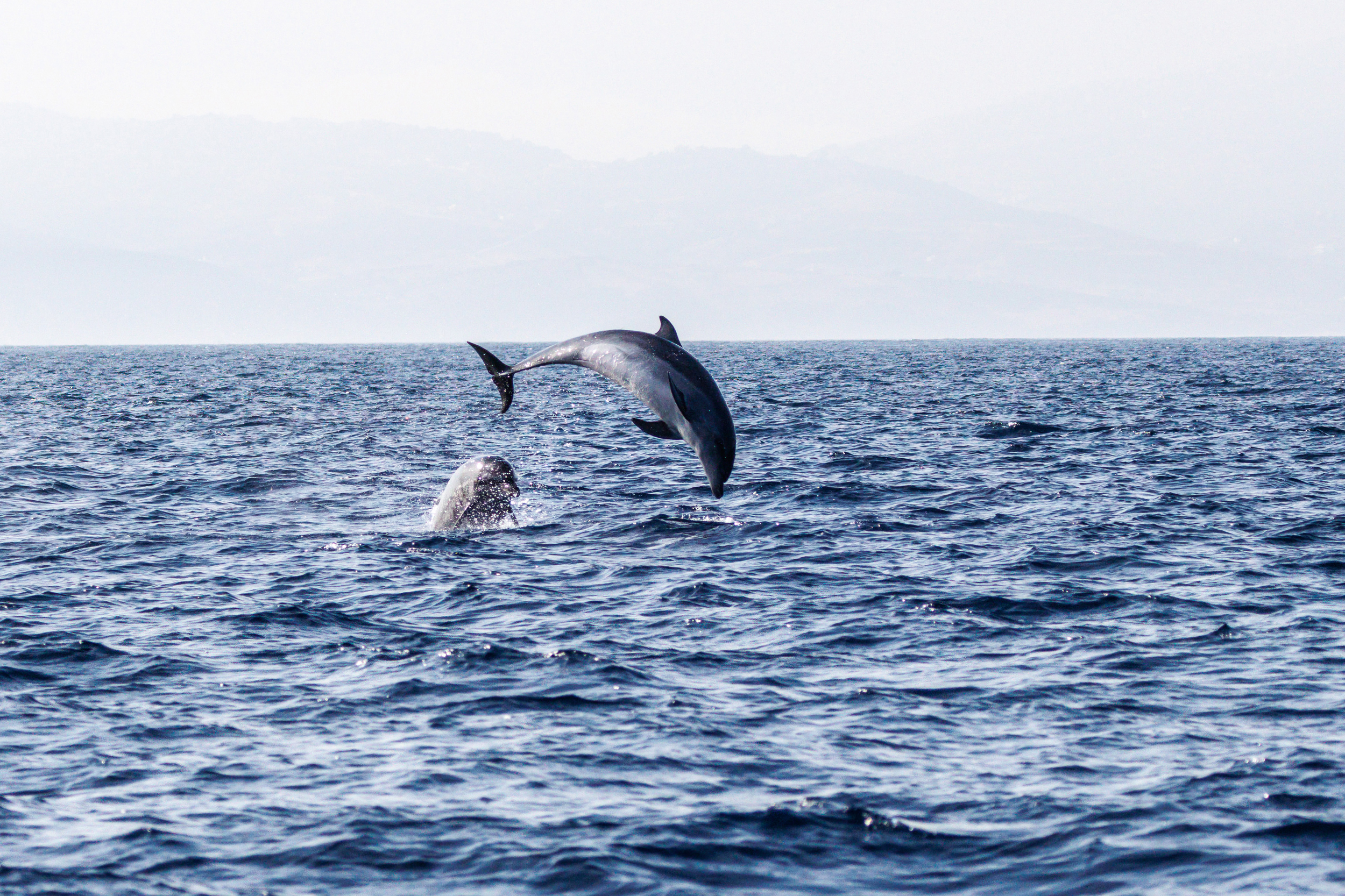
In 2023, more than 200 river dolphins, which migrate seasonally between tributaries and lagoons in the Amazon, died due to record-high temperatures, along with much of their prey. In some areas, their shallow aquatic habitats exceeded 100 degrees Fahrenheit. “The river systems were unusually empty and dry and the animals got isolated,” said Mark Simmonds, scientific councilor for marine pollution for the U.N. convention, who led some of the discussions around climate change impacts on cetaceans at the workshop in February. “They lost the water that they would have been living in.”
Loss of prey in traditional habitats is of particular concern for migrating marine mammals that are forced to follow their prey into new, and sometimes more perilous, waters.
This is particularly evident in the case of critically endangered North Atlantic Right whales, which the report says are especially prone to ship strikes and entanglement in fishing gear as they pursue their prey—tiny crustaceans called copepods—which are moving towards cooler waters. There are fewer than 400 of the whales left.
The North Pacific humpback whales that feed off the coast of California are also at risk.
This story is funded by readers like you.
Our nonprofit newsroom provides award-winning climate coverage free of charge and advertising. We rely on donations from readers like you to keep going. Please donate now to support our work.
Donate NowAccording to the report, these whales have experienced significant changes in their migratory routes due to climate-driven shifts, which has resulted in many getting entangled in dungeness crab fishing gear.
While it is not completely clear what is driving these shifts, Ari Friedlaender, an ecologist and professor at the University of California, Santa Cruz, who monitors whale migrations and did not attend the convention’s workshop, said it could be that changing ocean conditions may be pushing the whales’ prey closer to shore.
“The timing of when these animals migrate now puts them in overlap with that fishery, whereas [previously] they would have migrated through that same area, but at a different time of year,” he said.
In some places, such as the Southern Ocean, Freidlaender said he is especially concerned about the overall availability of prey needed to sustain the whales that feed there. “The food is limited in Antarctica.”
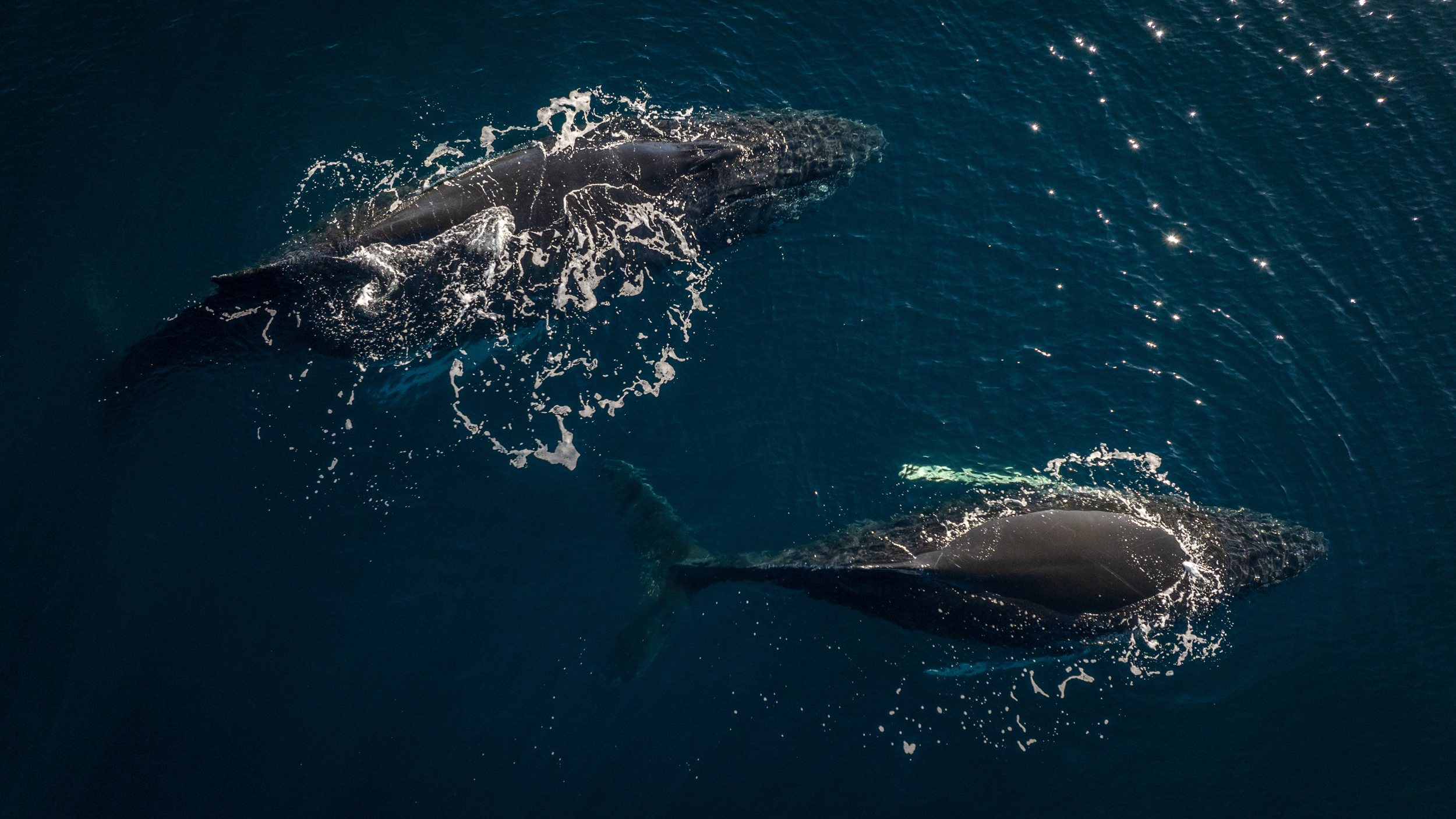
Ideally, migrating whales arrive at their polar feeding grounds right around the same time that krill, their preferred prey, are swarming in massive aggregations in response to phytoplankton blooms, which the little creatures feed on. This synchronicity allows the whales to gorge for several months while building the fat reserves they need to survive long stretches of time that they will go without food as they migrate back to their breeding grounds to mate and calve. But warmer temperatures and melting sea ice are disrupting these cycles.
Krill blooms in polar regions are weakening, peaking earlier, or failing to materialize altogether, Atwood said.“Increasingly, whales reach their feeding grounds to find krill stocks depleted.” This, in turn, forces the whales to travel even greater distances in search of sustenance. But it doesn’t always mean they find it.
“There may not even be an opportunity to go to a place where there is more food,” said Friedlaender.
Krill thrive in icy environments. They graze on algae growing on the underbelly of sea ice, which also provides a nursery-like environment for krill larvae to grow safely without being preyed upon. But as this sea ice disappears, some krill are leaving their traditional habitats and moving towards colder waters. Others are vanishing altogether. In some years, where there’s less sea ice, Friedlaender said, “There’s just not enough food around.”
As a result, it’s becoming more common to see some of the world’s largest whales, including humpbacks, showing up in tropical breeding grounds “looking very skinny,” Simmonds said.
This can have significant repercussions on their health, Friedlaender said, including their ability to reproduce. “It could have those sort of cascading impacts of really changing the dynamics of how that population grows.”
To conserve whales and other migratory marine life, Friedlaender said, static protections such as implementing marine protected areas are not enough. Instead, he said, dynamic management strategies must be created and implemented that help protect the animals as they move, such as real-time monitoring of whale movements, shifting shipping lanes or requiring vessel speed limits when whales are present, as well as stricter fishing regulations in key habitats. Ongoing research into how climate change is reshaping animal migrations around the world is also critical, Atwood said, not only to safeguard the species themselves but to protect the ecosystems they help sustain.
“Because these animals are so uniquely adapted to move across huge swaths of land and oceans, oblivious to political borders, the solutions must be just as dynamic, far-reaching, and borderless,” she said. “Effective responses therefore require an integrated understanding of projected climatic and habitat changes, species’ ecologies and behavioral responses, and mechanisms for fostering international cooperation.”
About This Story
Perhaps you noticed: This story, like all the news we publish, is free to read. That’s because Inside Climate News is a 501c3 nonprofit organization. We do not charge a subscription fee, lock our news behind a paywall, or clutter our website with ads. We make our news on climate and the environment freely available to you and anyone who wants it.
That’s not all. We also share our news for free with scores of other media organizations around the country. Many of them can’t afford to do environmental journalism of their own. We’ve built bureaus from coast to coast to report local stories, collaborate with local newsrooms and co-publish articles so that this vital work is shared as widely as possible.
Two of us launched ICN in 2007. Six years later we earned a Pulitzer Prize for National Reporting, and now we run the oldest and largest dedicated climate newsroom in the nation. We tell the story in all its complexity. We hold polluters accountable. We expose environmental injustice. We debunk misinformation. We scrutinize solutions and inspire action.
Donations from readers like you fund every aspect of what we do. If you don’t already, will you support our ongoing work, our reporting on the biggest crisis facing our planet, and help us reach even more readers in more places?
Please take a moment to make a tax-deductible donation. Every one of them makes a difference.
Thank you,


